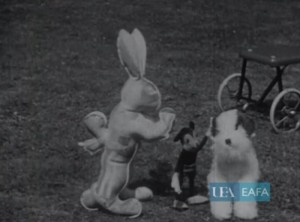
"A record of the second birthday of June Thubron. The spontaneous actions of a little girl on finding her birthday presents. A record of her actions without any adult direction. The little girl plays with her birthday presents on the lawn and also waters flowers in the garden before falling asleep. In a stop-frame animated sequence subtitled 'Dreamland' towards the end of the film, her new toys come alive." East Anglian Film Archive.
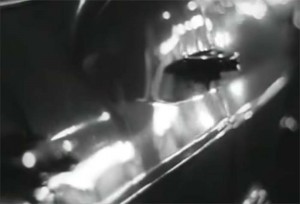
"Herbie is an abstract pattern mostly of automobile headlights enough out of focus to cause the viewer to wonder what they are. The judges felt the maker of this film should be commended for synchronizing his sound track to the abstract movements, of the patterns made by the lights" PSA Journal, Aug. 1967, 37.
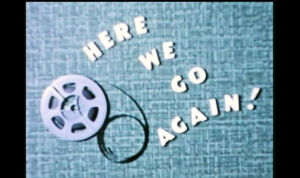
"An amateur film made by and starring the husband and wife duo, John & Evelyn Kibar. The film documents the couples’ struggles to make and complete a travelogue film of their travels to Colorado. Title cards with dialogue are dispersed throughout the film." Chicago Film Archives
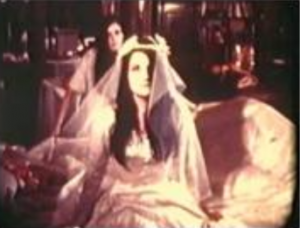
"Celestinos filmó la cinta en una vieja casa de Chimalistac, al sur de la Ciudad de México. Según la historia en ella habitan dos hermanas que viven un encierro real y metafórico a causa de su sexualidad reprimida. Las primeras imágenes de la película muestran a una de ellas vestida de novia, mientras que otra lleva la cola del vestido. La escena da pie a un erotismo doloroso: una de ellas se acaricia para que la cámara muestre en close up sus lágrimas. Un flash back nos muestra la causa: el momento de su infancia en que una monja de visita en la casa le dio manotazos por haberle mostrado una imagen de una mujer desnuda que encontró por casualidad. El personaje busca liberación. (...) La otra hermana también busca salir de la casa (emblema del ámbito doméstico familiar), y encontrar su libertad sexual" (Vázquez Mantecón, 2012)
"Celestinos filmed the tape in an old house in Chimalistac, south of Mexico City. According to the story, the house is inhabited by two sisters that live in a real and metaphorical confinement because of their repressed sexuality. The first images of the film show one of them dressed as a bride, while the other carries the tail of the dress. The scene is followed by a painful erotism: one of the caresses herself to make the camera show her tears in close up. A flash back shows the cause: the moment of her childhood when a nun hits her hands because she showed her a picture of a naked woman that she found by chance. The character seeks liberation. (...) The other sister is also looking forward to leave the house (emblem of the familial domestic scope), and to find her sexual freedom" (Vázquez Mantecón, 2012)
"The Hero, 150 ft., 16mm., is perhaps the best of the very short, simple film stories. Its most remarkable quality is the clarity with which a fairly complicated plot is presented within the limited footage. The greatest difficulty faced by all amateur producers of film stories, short or long, is that of making the story completely clear, with the right emphasis on the introduction of characters and plot and the development of the action. In The Hero, the Silver Screen Players have overcome this problem and, in addition, have achieved fine economy of footage and action. The acting is natural and the photography excellent." Movie Makers, Dec. 1931, 686.
"Het is Lente in Holland!, by Esther Cooke, may well be one of the most beautiful and perceptive travel studies of this (or any) contest year. For here is no banal tourist mish-mash of the usual wooden shoes, windmills and cheese markets; we find in their stead a literate and respectful account of a small country with its old and cherished travel conditions. Technically sparkling and esthetically pleasing, It is Spring in Holland is so deceptively simple that each viewer is likely to assume that he could easily do likewise. But the skill which Mrs. Cooke has lavished on each succeeding scene should not be taken lightly. Her exposures are exact, creating color which seems magically luminescent; her viewpoints are knowingly selected to create fresh and revealing compositions, and her editing has blended the whole into a travel study of exceptional poise and beauty" PSA Journal, Jan. 1955, 48-49.
"Film of picturesque scenes of flowing water." Library and Archives Canada.
"This time the Lawlers have produced a short-family picture in several parts. Each part is filmed to the interpretation of a poem recited by a very young voice, undoubtedly a member of the Lawler clan. The stories include the Shoemaker, the Bath, the Party, the Counterpane, snow (sleigh riding) and Hiding. A pleasing picture of the children accompanied by the voice of the little girl" PSA Journal, Nov. 1959, 48.
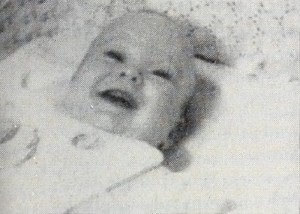
"Louis Dishotsky and Arthur Rosenthal have put together in High Card Goes an entertaining variation on the travel record film. A definite story line replaces the usual slight continuity device. A pair of tickets for a Florida trip are won on a radio quiz show, but since both parents and two children cannot go, the mother and the father draw cards, high card winning. Wifey tops her mate's king with an ace and takes off for Florida, with the older child. The luckless husband is left to tend the baby and the house. While the acting is fine and the production is technically competent, the pictorial-dramatic pace is rather slow. Tighter editing is indicated." Movie Makers, Dec. 1951, 411-412.
Total Pages: 203